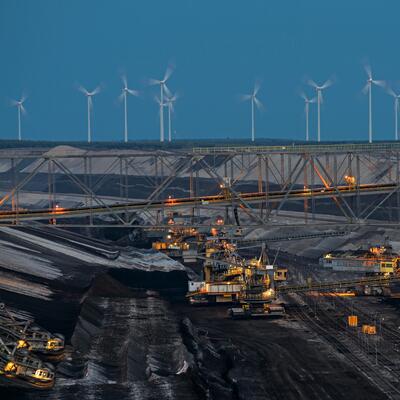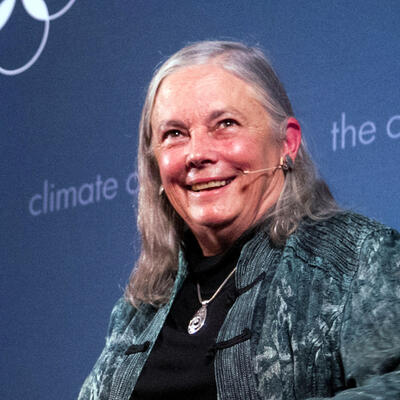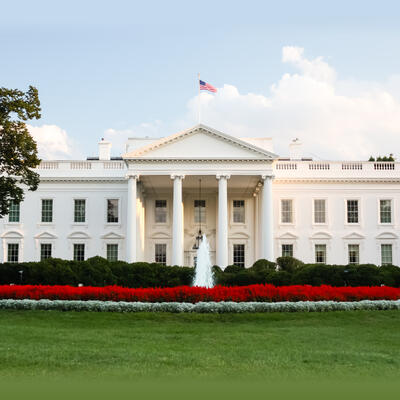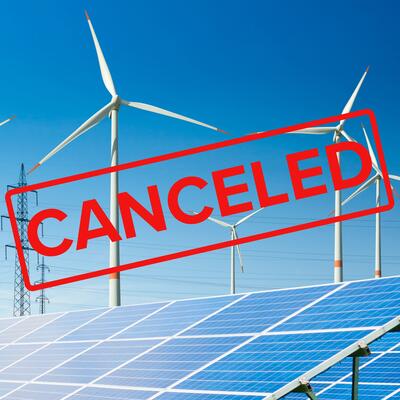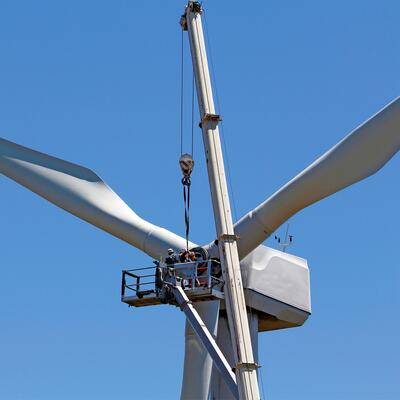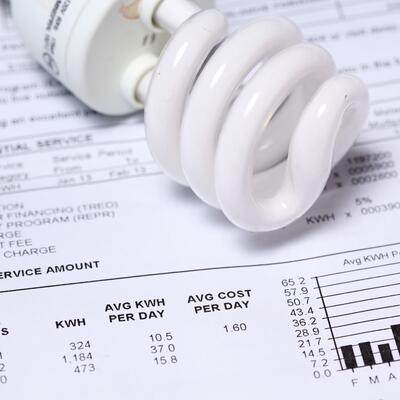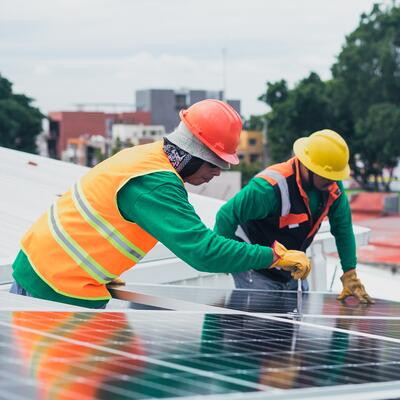
How Some Countries Are Solving Climate Change
Guests

Sonia Aggarwal

Joshua Goldstein

Staffan Qvist
Summary
When it comes to cutting emissions, there are many paths to success. Sweden, France, South Korea, and Ontario have all taken steps to replace fossil fuels with nuclear, hydro and renewable energy, while China is expanding electric car and battery production. But the absence of U.S. climate leadership is causing heads of state to ease off their goals, and violent protests in France against higher diesel taxes are casting a shadow over efforts to combat climate change. Who’s moving ahead and who’s moving backward in the transition to a clean energy economy?
Full Transcript
Announcer: This is Climate One, changing the conversation about energy, the economy, and the environment.
When it comes to cutting emissions, some countries are moving quickly.
Sonia Aggarwal: In Europe, if you look at Spain and Ireland, there’s a lot of progress there.
Joshua Goldstein: We talk about Sweden quite a bit. France, Ontario, South Korea.
Staffan Qvist: In Sweden, for instance, half of the power comes from hydroelectric and half from nuclear.
Announcer: But a lack of U.S. leadership is causing other countries to ease off their commitments.
Joshua Goldstein: The Paris agreement we all thought it was a step in the right direction. It's a step, everything is a step in the right direction the question is are you getting there fast enough to head off this catastrophe.
Announcer: Is there an optimal way for economies to decarbonize?
Sonia Aggarwal: It is absolutely possible to put together a portfolio of zero carbon resources that delivers electricity reliably.
Announcer: How some countries are solving climate change. Up next on Climate One.
Announcer: Which countries are moving ahead and which are moving backward in the transition to a clean economy? Climate One conversations – with oil companies and environmentalists, Republicans and Democrats – are recorded before a live audience, and hosted by Greg Dalton.
I’m Devon Strolovitch. After several mostly flat years, worldwide emissions of greenhouse gases reached an all-time high in 2018. But clean energy continued to advance with a record amount of new solar capacity.
Sonia Aggarwal: We’re seeing some numbers that I think are kind of nuts. Solar is 90% cheaper than it was 10 years ago wind at 70% cheaper batteries are 80% cheaper than they were.
Announcer: Sonia Aggarwal is Vice President of energy at the consulting firm Energy Innovation. She previously managed Global Energy Research at ClimateWorks Foundation, a supporter of Climate One. She’s optimistic that clean energy technologies can be deployed at speed and scale.
Joshua Goldstein: We’re talking about the path to decarbonize the world. We need to decarbonize the world economy really quickly and at massive scale.
Announcer: Joshua Goldstein is Professor Emeritus of International Relations at American University, and co-author of the new book, A Bright Future: How Some Countries Have Solved Climate Change and the Rest Can Follow. Goldstein is less sanguine about the prospects for decarbonization if what matters most is carbon output.
Staffan Qvist: Benching one of your main players in the low carbon system is never going to be a good thing.
Announcer: Staffan Qvist is an energy consultant and co-author with Joshua Goldstein of A Bright Future. A native of Sweden, where half the power comes from nuclear energy, Qvist believes countries that shun or even shut off nuclear power are slowing the transition to a cleaner economy.
Let’s listen as Greg Dalton welcomes all three to the Climate One stage for a conversation about what's working and what's not in the fight to stabilize the climate.
Greg Dalton: Sonia, let’s begin with you, as you look around the globe who’s doing the best, who’s winning the race to change their economy and their energy before climate really gets bad?
Sonia Aggarwal: Great question. We here in California actually like to -- there’s a lot of folks in Sacramento who kind of consider us to be a separate country and of ourselves, right. So now if California was a separate country it would be the fifth largest economy in the world. So it matters a lot what’s going on here. Here we have suite of policies which really look at each of the different sources of greenhouse emissions whether it’s power plants or factories, cars, buildings, agriculture. And have set targets and put together really detailed policies to move us to lower carbon system overall here. There’s also of course quite a few other countries that are really moving quickly. In Europe if you look at Spain and Ireland, there’s a lot of progress there. I know some of my co-panelists will also talk about some other progress in Europe too. But it’s been pretty amazing to see how the market has taken off to really bring down the cost of clean energy and what impact that’s making in a lot of different places around the world.
Greg Dalton: Joshua Goldstein, let me challenge a little bit. Even the question of, well, the title of the book which is I’m not sure that any country has really solved climate change.
Joshua Goldstein: Well nobody solved climate change but the reason we call the book how some countries have solved climate change and the rest can follow we’re talking about a path that no one country can solve climate change it's a global problem. Talking about the path to decarbonize the world we need to decarbonize the world economy really quickly and at massive scale. And the way that some places are doing it and I would include California in this they’re moving in the right direction but it's not fast enough and it's not a path that could actually realistically get to the goal by midcentury. Other countries and we talk about Sweden quite a bit, Staffan’s country, France, Ontario, South Korea have added clean energy much faster and we’re interested in that model and how could apply to the world as a whole. The metric that matters here is carbon going into the atmosphere. It's not what you say it's not how many renewables you put in or how many nuclear plants you put in or how many protesters you get in the street it’s how much carbon is going up. And you don't need to take our word for it. There's a wonderful website called electricity map.org that shows how many grams of carbon for each kilowatt hour of electricity how dirty is your electricity for the countries in the world and for the states within the United States or regions. And if you look at that you can see who's green color-coded green that's very little carbon going in and who's really brown, you know, lot of carbon. California is in the middle on that, Sweden and France are really green and they're doing it with nuclear power primarily in Sweden's case nuclear and renewables. There are also countries that can do it with hydroelectricity, but that's very hard to expand because many countries don't have that resource. So we want to turn that map green and we have very little time to do it and it's at a large scale.
Greg Dalton: Staffan Qvist, tell us your European favorites, so Sweden of course it’s easy to dismiss small northern European countries with small population Singapore, Nordic countries it’s like oh it's easy for those small more socialist countries to do things. So tell us the case for those.
Staffan Qvist: Yeah, so when I look at a problem like I was renovating my house I always go to YouTube and I search like how do you do this. And usually that's a good way to look at a problem as anyone actually managed to do what we’re trying to do. And the first step in what everyone is trying to do is decarbonize the electricity grid because that's kind of the low hanging fruit of decarbonization. And throughout my entire lifespan I was born in 1986, Sweden had a completely decarbonized electricity grid. So for me it was obvious to see what did we do how long did it take how much that it cost. Obviously it’s a small example, but basically France is a similar example at a much larger scale. But Sweden is kind of the size of a typical U.S. state and so you could make the argument that if every state did like Sweden that would add up to United States for instance but France is a similar story in a much larger scale. There are a few examples, but obviously we have this big problem because there aren't a lot of good examples there are only a few good examples. But what I was starting to look at in my academic researches how did Sweden do this, how did France do this how quickly did it happen and how much did it cost. And so those stories I think are stronger than energy systems modeling which I also do because they actually happen in real life.
Greg Dalton: Of course you talk about France, you have to talk about the recent yellow vest protest, Sonia, a lot of people on the right Heritage Foundation were very quick to point out aha, you try to price carbon raise gasoline taxes there's revolutions in the street which could send a chilling effect to some politicians thinking oh, we don't want to have that here, but it's actually more complex.
Sonia Aggarwal: I totally agree. Yeah, so there’s a lot of different things going on in France at the moment in terms of their overall economic policy. So one of the things of course is a less of carbon oriented climate oriented policies but at the same time there’s a lot of broader immigration and economic issues that are going on as well.
Greg Dalton: Changing income taxes a lot of things to get angry about.
Sonia Aggarwal: Exactly, exactly. So yes, the taxes are a huge issue overall not just the taxes on fossil. So I think that without a clear plan to bring communities along and bring working people with you on the solutions, it’s gonna be a lot harder to get there but I don’t think that it’s a one or the other here on pricing carbon.
Greg Dalton: Joshua, as a professor of international relations it must sting to look at, you know, we have the Paris climate accord and we hear the president of France trying to advance a climate policy and it literally goes up in flames. What is that say to other politicians around the world about climate leadership and it's gonna have a chilling effect.
Joshua Goldstein: Well, carbon pricing is which a gas taxes kind of a version of it, it’s hard politically and Australia put it in and then the government lost power and it was taken back out. Washington State just try to pass a carbon price and it didn't pass --
Greg Dalton: Second time it failed.
Joshua Goldstein: Second time it failed. British Columbia has done it pretty successfully and Canada is trying to put it in and then California and New England have a pretty low tax. But when it works it's great and Sweden has done it very successfully $150 per ton, which is very high carbon tax. When a carbon price works it works across the whole economy and it does not picking particular technologies it works for renewables or nuclear power geothermal on the evening the price with fossil fuels right now fossil fuels can dump their pollution in the atmosphere not only for climate change effects but also health effects of burning coal and so forth, that's all free. So if you can even that out then and it works across the whole economy and it works really quickly then that's a huge step forward. So there are efforts in the U.S. Congress now to pass a carbon pricing bill raise the price of fossil fuels and rebate to the citizenry the revenue that's raise its revenue neutral and it's got support from a lot of Republicans and Democrats alike. But it is a hard issue politically.
Greg Dalton: Staffan Qvist, you write about Three Mile Island, Chernobyl and Fukushima the three big nuclear disasters that have happened in modern times. What has been the total human impact of those three disasters, Three Mile Island, Chernobyl and Fukushima?
Staffan Qvist: Well, this is a very interesting issue of information and the public sphere being kind of misguided or misguiding I would say. There's been a polling when people are asked how many people, this question basically, how many people do you think died or got injured in Three Mile Island or in Fukushima and Chernobyl. Next to zero percent have what is the scientific consensus correct answer, almost no one knows the answer to these questions and that's part of what we're trying to address in the book. So Three Mile Island obviously no one got harmed at all. Chernobyl there is a statistical increase in cancer because there’s a lot of radiation released. I think the consensus from the U.N. studies is potentially over time if you use the most conservative model maybe up to 4,000 people may lose their lives from that really severe accident. In Fukushima there's one contested case where someone -- his death may have been contributed by him being near Fukushima.
Greg Dalton: Joshua, big concern with nuclear of course is about nuclear proliferation. You study international affairs they’ve got a big concern about, you know, loose nukes that material getting into the wrong hands.
Joshua Goldstein: Yeah, so backing up for a second on the safety issue and then the proliferation is kind of a similar answer. Any fuel is gonna have pluses and minuses and nuclear power should be treated like other such costs and benefits and you want to have a sensible attitude toward it. So to say like one accident happened Chernobyl and thousands of people died gonna compare that with people that coal kills every year people that hydroelectric dams burst, methane gas blows up, you know, natural gas and so forth. So there's all pluses and minuses. And one of the minuses of nuclear power although it's not well understood is that the same material same physical process has a relationship to nuclear weapons and in nuclear power production and that's a big reason people are afraid, especially those of us that grew up in the Cold War because we hit our heads under the desks we were terrified we’re traumatized by nuclear weapons and rightly so they are pretty terrifying and then we kind of say anything nuclear that that's what it reminds us up. So nuclear plant can't blow up like a nuclear weapon that's an impossibility. And nuclear material from a civilian nuclear plant in theory could be accumulated and used to make a nuclear weapon with. But what we have is a system of international controls under the International Atomic Energy Agency to which all but four countries in the world belong and that system intrusively monitors all this material they put cameras on the site they put seals on the canisters and, you know, sort of very carefully make sure that nothing is diverted out of civilian nuclear power program. It’s been entirely successful and nobody's been able to make a bomb, you know, as a result of any failure in that system. Countries like Israel and North Korea that don't belong to that and have made bombs they don't even have civilian nuclear power programs and Pakistan and India also don't belong they do make nuclear weapons and they have nuclear power, but they don't make the nuclear weapons from the nuclear power systems it would be inefficient and uneconomical. They have their separate military reactors to produce plutonium for weapons and then they got reactors that are producing electric power. So we've managed to keep them separate. It's worked so far. If we have a big increase in nuclear power to address the climate crisis we should ramp up those safety controls and do more and make sure that there's no failure but so far that system is working.
Announcer: You’re listening to a Climate One conversation about how some countries are solving climate change. Coming up, Greg Dalton asks more about how nuclear and other low-carbon technologies fit in the energy market today.
Sonia Aggarwal: Solar-plus-storage and wind-plus-storage in some of the most recent auctions are coming in at cost that are below the ongoing operating cost of existing coal plants. It’s a pretty amazing moment.
Announcer: That’s up next, when Climate One continues.
Announcer: We continue now with Climate One. Greg Dalton is talking about international efforts to sabilize the climate with Sonia Aggarwal, Vice President of energy at the consulting firm Energy Innovation. Joshua Goldstein, Professor Emeritus of International Relations at American University. And Staffan Qvist, an energy consultant and co-author with Joshua Goldstein of the new book A Bright Future: How Some Countries Have Solved Climate Change and the rest can follow.
Here’s your host, Greg Dalton.
Greg Dalton: In 2010 President Obama greenlighted a construction of the first new nuclear reactors in the United States in more than 30 years. Some call the move the beginning of a nuclear renaissance. Nearly a decade later neither of those projects, Georgia’s power plant Vogtle outside of Augusta and the V.C. summer project near Columbia, South Carolina are close to being finished. Matt Kempner has been covering the story for the Atlanta Journal-Constitution.
Matt Kempner: A lot of the power industry was interested in the possibility of getting back into the construction of new nuclear power in the United States. So President Obama and his administration, streamline the process and the federal government also offered a batch of tax credits and loan guarantees. It didn't go the way many had hoped, South Carolina ditched out already, they pulled the plug on the project of course that meant that there were billions of dollars spent on the project that the ratepayers in South Carolina weren’t going to get any benefit from like the lawsuits and all kinds of other things Georgia Power and therefore many of the ratepayers in Georgia the customers in Georgia thought they had some level of protection. But the cost overruns became so deep that in fact the contractors started pitching out of the project and ultimately its main designer Westinghouse Electric ended up filing for bankruptcy protection and as a result, the risk all went back on Georgia consumers. The costs are now something like $27 billion which is about double what the original projections were and the project is years behind schedule and it still has years to go. It's become clear that the costs of nuclear power end up now looking like they are significantly higher than at least the current costs for some of the alternatives like natural gas, solar power.
Greg Dalton: That was Matt Kempner, a reporter with the Atlanta Journal-Constitution. Joshua Goldstein, let's talk about that $8 billion in federal tax subsidies the cost double ratepayers getting hosed taxpayers getting hosed that was supposed to be a nuclear renaissance.
Joshua Goldstein: Yeah, now that was crazy and then it's not entirely specific to nuclear because you have any big capital projects in the United States like the new Tappan Zee Bridge they just go way over budget they’re way behind schedule big defense projects too. And these nuclear plants, you can't make electricity at affordable rates when you do it that way. By contrast, South Korea has been building new nuclear reactors and they do it by repeating a standardized design over and over again and the cost come down each time. So what's costing $12 billion in these new projects per gigawatt of capacity they can do for $2 billion. So a huge difference in the labor but cheaper but mostly it's the construction methodology the effort to keep costs down hold different way of contracting. And these four plant Westinghouse plants that we've had such trouble building here China just opened four of that exact plant in the last year. So they can build them way cheaper than we can build them.
Greg Dalton: Though it's a little murky in these state run economies of exactly the accounting you don't have the same investors in terms of the financing I think is less transparent. Sonia Aggarwal you did some early research on McKinsey cost curves and economics of various energy systems. How do you think nuclear fits in in the market today in the mix?
Sonia Aggarwal: Sure. So I guess I’ll just start by saying it is absolutely possible to put together a portfolio of zero carbon resources that looks many different ways and delivers electricity reliably. So then looking at cost comparisons I think it’s been really interesting to see some of the very exciting technology-neutral auctions that have been happening across the United States and on other parts of the world over the last few years, especially as coal plants have started to retire. We’re seeing some numbers that I think are kind of nuts honestly not just for solar company or wind coming in which are extremely low cost and have come down let’s see, solar is 90% cheaper than it was 10 years ago wind at 70% cheaper batteries are 80% cheaper than they were. But that’s kind of the key point to here, especially in this context of dispatchability and balancing the grid. Solar-plus-storage and wind-plus-storage in some of the most recent auctions are coming in at cost that are below the ongoing operating cost of existing coal plants and that’s just a crazy time if you think about it in a system that has traditionally moved very slowly it’s a pretty amazing moment. And we have seen the evidence of this, you know, these are just the most recent auction results but this has been the kind of inexorable decline over the last decade and we’re seeing more and more renewable energy capacity built here in the United States as a result of that.
Greg Dalton: And that’s really the power of economies of scale repeating that manufacturing over and over and over again which fossil fuels don't have that same advantage because you got oil well here it runs dry you got to do oil well somewhere else they don't have resource extraction doesn't have the same manufacturing economies of scale, Staffan Qvist, neither does nuclear yet.
Staffan Qvist: No. And I would disagree with you a little bit on these numbers because in Sweden for instance, half of the power comes from hydroelectric and half from nuclear. So it's kind of the ideal place in the world to try to do 100% renewables you have hydro which is the most of you know, you can fill out any gap in the solar and wind production very easily. But then you have like this morning, you have no wind and the sun doesn't really rise in Sweden for a few months in the winter. And so somewhere half of the power system needs power from somewhere. And if the sun isn't shining, the wind isn't blowing if you want to build over like say a few days to what you need to cover that with batteries that system is far more expensive than even the most expensive nuclear that you could build. So when you say wind-plus-storage it’s all about storage it’s not a grid level scale balancing storage it's not a comparative number in that sense. So I would dispute that but I think we have a real world example of two different strategies. We have one country in Europe that a decade ago said we’re going 100% renewables we’re going all in the entire population is behind us we have enormous funding and we're going to do this and we have a decade of results and that's obviously Germany where basically they have not decarbonized in over a decade of extremely hard concerted effort to do the 100% renewables route it has not succeeded it's actually been a catastrophic failure. So I like to look at the real-world examples of what has worked and I think benching one of your main players in the low carbon system is never going to be a good thing. If you allow everyone to contribute that's going to be a better system and that's what history has shown us and that's actually what modeling shows us as well.
Greg Dalton: Sonia Aggarwal do you wanna reply?
Sonia Aggarwal: Sure. There’s a lot there I would say I totally agree we shouldn't bend to anyone I think that in the places where markets are allowed to function in a technology neutral way the evidence seems to show that renewables or renewables plus flexibility resources come in at a little bit lower cost than nuclear. That’s of course gonna vary across the globe because there are certain areas where, you know, solar and wind resources are less good than others but I guess I would say also on the Germany question, again, a little bit more going on there. One of the issues of course too is that they decided to shut down their nuclear fleet at the same time as they made that pivot to renewables. And I would say that’s not the right choice for the climate and much better would have been to get rid of the fossil units at the same time as turning toward renewables and then I think we would be in a much better position there too.
Greg Dalton: If you’re just joining us we’re talking about international efforts to combat climate change at Climate One. I'm Greg Dalton. My guests are Joshua Goldstein, professor emeritus at International Relations at American University. Sonia Aggarwal, vice president at Energy Innovation and Staffan Qvist an energy consultant and co-author with Joshua Goldstein. Joshua Goldstein I wanna ask you about the Trump effect the softening of U.S. leadership on international efforts. Because there was a lot of peer pressure that went into Paris in particular between Xi Jinping and President Modi and President Obama that's all different now. So how is the international dynamics of leadership on climate different now?
Joshua Goldstein: Well they weren't so great before and the Paris agreement we all thought it was a step in the right direction. It's a step, everything is a step in the right direction the question is are you getting there fast enough to head off this catastrophe that's the urgent problem we’re facing. In the Paris agreement as far as it goes if all the countries in the world kept their commitments, which by the way, almost none of them are everybody's falling off their commitment, if they all did keep their commitment all it would do is flatten out our carbon emissions at today's levels. That's not good enough, that's every day we’re putting way too much carbon into the atmosphere and what we need to be doing is rapidly decarbonizing the world economy. So we need something more than the Paris agreement. I'm not gonna say anything good about President Trump but if you took him out of the picture wouldn't change things that much and by contrast China says they want to be the climate leader but they’re burning half the coal in the world. So if China wanted to really be a climate leader they could commit to taking the coal off the grid and replacing it fast with clean nuclear power the way Sweden did as well as building out the renewables fast which they're doing. Put in the low carbon sources as quickly as possible, because just talking about it Paris agreement isn't getting there fast enough and the 100% renewables idea also can't get there fast enough. But if you bring everything to play and really come to terms with how serious the problem is, you could get there fast enough worldwide.
Greg Dalton: There’s something called the Climate Action Tracker which ranks critically insufficient Russia, Saudi Arabia, Turkey and the U.S. Highly insufficient, Canada, Japan, South Korea, very few people are doing getting anywhere close to where they should be. Sweden is not rated on this I don't know, Staffan. Tell us about some of the new promising nuclear technologies. There’s a company called NuScale that’s been interviewed here before the chief technology officer there’s sort of this often long seeming promise of next time will be different the next generation of nuclear will be different the small modular reactors are those for real?
Staffan Qvist: Yeah, NuScale is very much for real and it's a very exciting story. One of the major problem as you’ve seen with this giant construction projects is financing to find the amount of -- even if you build it cheaply to find the amount of money that's required to build on these projects is quite hard. And if you do get long construction delays your financing cost just paying off your loans becomes a really big cost driver. Now with NuScale and other people are trying to do is build smaller individual units that are cheaper in absolute terms, they might be similar in cost of delivered electricity but just cheaper and quicker to build because they’re smaller. And so you're trying to remove one of the major economic risks of nuclear development doing this and now they have a number of other advantages. Now NuScale has been able to prove that the safety of their plant is so good that their planning zone for emergencies is basically just the boundary of the site that they are out which opens up a whole different types of siting as well for these kinds of plants. So it's very much for real NuScale is a fantastic success story so far but of course we need see them built and we need to see them come in at prices that are relevant for the carbonize grid.
Greg Dalton: They also don't require power to keep the reactor safe which is a big concern after Fukushima about disruption of power. So if it's true, but they're still unresolved is the waste question. They still have the sort of normal waste issues, right. Staffan Qvist, here in this country we have this ongoing political battle there are Yucca Mountain there's bipartisan support for it if you're outside of Nevada. If you're inside Nevada there’s bipartisan opposition to Yucca Mountain. The full cost of that is forecast to be $100 billion a lot of money maybe not a lot in the grand scheme of the U.S. economy. But the waste issue is still there and it’s not getting solved.
Staffan Qvist: Yeah, I would caution that in my personal opinion and looking at facts the nuclear waste issue isn't that much of a time pressing issue. We know very well how to handle waste safely. And once we've dealt with climate change it's absolutely no problem with the build of repository for nuclear waste if you like to. Finland has started to build theirs the the Swedish one is approved there are methods to do this. But the amazing thing when you talk about this is that even in a country like Finland where they’re already building their approved nuclear waste repository. People still have the knee-jerk like response well there's no way to store it even when you have an approved system that is being built. It's kind of almost built in to people that it's not possible. We have a lot of dangerous wastes coming from numerous industries that we don't know how to store safely that needs to be stored forever. Not just for a very long time but forever which we don't care enough about, but the nuclear waste they should be really do care about so we have solutions for that. Now obviously the U.S. situation is a mess but it's not a time critical issue.
Greg Dalton: Sonia Aggarwal, Nicholas Kristof, New York Times columnist wrote an article recently saying that 2018 was the best year ever. People are living longer and better literacy child mortality 2018 life on earth is getting better, you know, Steven Pinker says this, do you agree?
Sonia Aggarwal: Well, I’ll say I’m optimistic about the future and I think that one of the things that makes me the most optimistic is that we have clean energy technologies that can be deployed at speed and scale and are being deployed at speed and scale of course we have to go faster. A statistic that I heard recently was that to stay within two degrees if we started in 2000 we would need to reduce greenhouse gas emissions by 3% per year if we started now we have to reduce them by 10% per year this is global. And then if we wait 10 more years we have to start reducing greenhouse gases at a rate of 30% per year. Now that’s a staggering statistic to me. We are not currently reducing greenhouse gas emissions so we do need solutions that can happen at speed and scale but if we’re in such a great time where people are living longer there’s access to new information there is new technology available to us, I think we’re in a better position than we ever have been to get that going fast. And we’re seeing some really interesting fast scaling resources happening around the U.S. and around the world. China is building nuclear power plants, Texas is building three gigawatts of solar and five gigawatts of wind within the next couple of years which that’s, you know, a typical nuclear power plant is about a gigawatt. So if we can--
Greg Dalton: What’s the gigawatt do, I’m in this business I don’t understand what a gigawatt is.
Sonia Aggarwal: Gosh, I wish I have the number of homes.
Greg Dalton: In terms of a number a couple hundred thousand homes?
Staffan Qvist: I can give you a quick number. So Sweden has about 20 gigawatts of power installed for 10 million people.
Greg Dalton: Okay.
Joshua Goldstein: If we think of kilowatt hours, which is what people see on their bill our world electric grid right now is about 25 trillion kilowatt hours, right. But projecting forward and this goes to people's lives improving and the poorer countries, a hundred thousand people a day hooking up to the grid this is lifting people out of poverty in a big way worldwide. And these are the trends Nick Kristof is talking about that people are getting more income and especially getting more energy, this is really great. Somebody in India can have an air conditioner and so forth. But right now coal is the cheapest way to do that worldwide and that's what they're turning to right now. So this 25 trillion kilowatt hour that's today's electric grid, but that's gonna grow. And then we want to start to electrify transportation we all be driving electric cars and we want to electrify building heating and industry and we want to create alternative fuel so that something like aviation fuel could be made carbon neutral. It all comes down to vast amounts of cheap clean electricity. So that's why you need to scale up so tremendously and so quickly to get to a decarbonized world by midcentury
Announcer: You're listening to a conversation about creating clean economies around the world. This is Climate One. Coming up, questions from the audience about how to make carbon-free technologies more viable in today’s energy marketplace.
Staffan Qvist: Make the other electricity sources pay their external costs of pollution and people getting particulate matter in their lungs and dying. If you include that in the cost, that immediately changes the economic landscape.
Announcer: That’s up next, when Climate One continues.
Announcer: You’re listening to Climate One. Greg Dalton is talking about the transition to carbon-free economies with Sonia Aggarwal, Vice President of energy at the consulting firm Energy Innovation. Joshua Goldstein, Professor Emeritus of International Relations at American University and co-author of the new book A Bright Future: How Some Countries Have Solved Climate Change. And Staffan Qvist, an energy consultant and co-author with Joshua Goldstein of A Bright Future.
Here’s Greg.
Greg Dalton: Sonia I wanna ask you, you’re the optimist do you ever have moments of fear or doubt where you say, boy, this is scary, I don’t know if we can do this at the scale. You have moments of like maybe my friends are all alarmist and it's not as bad as they think?
Sonia Aggarwal: Definitely. I mean this is a problem with quite overwhelming magnitude especially looking at those statistics around how quickly we need to really start seeing results in bringing down greenhouse gas emissions. I sort of think of it as how far we have to bring down and how quickly we have to bring them down. That means that we need really to be working with everything that we’re putting out there now has to be zero carbon and we have to be letting all the technologies compete to get out there as quickly as possible better zero carbon. So yes, I mean the magnitude is overwhelming but I also have a lot of faith in humanity so.
Greg Dalton: Staffan Qvist, you just got off a plane from Europe. What do you personally do to have a low carbon lifestyle?
Staffan Qvist: Well, I mean the main thing I try to do is write scientific articles and books about how we can decarbonize our electricity. But I would say in my own personal defense I haven't had a car, I had a car when I was 18 for a few months but since then I've never had a car at all. And ironically my electricity contract is 100% renewables is just because there is no 100% low carbon contract for me to buy which is what I would like to buy but the 100% renewable one is the second best thing so I do that. But I also do this kind of my family did the Christmas gifts this year was carbon offsets not the most fun Christmas opening ceremony but yeah.
Greg Dalton: The best stocking stuffers. Joshua Goldstein, you have an interesting story for how you were inspired by a loved one to get into this tell us that.
Joshua Goldstein: Yeah, so I started as an environmentalist back in the 1970s and I started one of the first curbside recycling programs in the country. I hated nuclear power like everybody did because it was big and technological and unnatural. And then I had children and my son in particular when he turned 10, he became a climate activist and he started to just hammer on me he’s 25 now so that's a lot of hammering. Climate is the issue this is the planet you're leaving us this is the thing you need to work on and I'm a global trends person so I thought you know about five years ago okay, I will work on it. N ot just the feel good things, not the ideologies but how am I gonna turn over to my children a planet that's in good shape for them to live in.
Greg Dalton: We’re gonna invite you to join us for the conversation. Welcome to Climate One.
Male Participant: This maybe a little more in depth than you typically think but you guys are pretty wide ranging. And so if you own a gas and electric utility call it you’re a director on that or CEO whatever all you want what would you do to decarbonize?
Greg Dalton: Sonia Aggarwal.
Sonia Aggarwal: Sure. So I would first take a look at my existing fleet of generation resources to understand where I’m coming from, right. So what kind of system am I operating in I would look at over time are we gonna see a lot more electricity demand in my region. Then I would start to think about putting out technology neutral auctions for which ever zero carbon resource can come in to provide electricity that we are going to need over the next 10, 20, 30 year period. I would also make a very clear public statement about what emission reduction target I have the sooner the better and zero is the right answer. So then start to put together a portfolio of resources that can deliver that electricity over time at least cost and reliably. Of course I would also this perhaps is a little nerdy again but looking at new tools for how you think about system management is really important right now because we are moving into an era where we have a lot more variable resources on the generation side. We have a lot more opportunities for deploying resources more flexibly for thinking about how do we smartly electrify everything how do we make sure that people can charge their cars at home and feel comfortable with their heating and cooling and do so in a way that’s gonna be the most efficient for the individual and for the system and as an integrated whole.
Greg Dalton: Let’s go to our next question. Welcome.
Male Participant: Like Joshua Goldstein I became an environmentalist from the 70s and hated nuclear power and it sort of come around on it. But hearing what you're saying here what’s the one big driver that we would need to change in order to try and make that a viable technology in this country?
Greg Dalton: Staffan Qvist.
Staffan Qvist: I mean there are multiple steps. The first one the most obvious one is to make the other electricity sources energy sources pay their external costs. So internalize the external cost of pollution and people getting particulate matter in their lungs and dying. If you include that in the cost of competing electricity generation such as natural gas or coal that immediately changes the economic landscape. But what you also need to do is whenever you have a portfolio standard or a green new deal or whatever that needs to be goal oriented. So if you want to have low emissions that should be the goal not how many of your favorite energy sources you build. So if you include nuclear in all of those standards in the deals and you include the external costs and then you need to invite the Koreans to come and build 15 identical plants one after the other at $2000 per kilowatt and then.
Joshua Goldstein: The economic piece of this is really important if you want to build out nuclear power it’s got to be a different model than what we have now. And you talk about the solar and wind cost coming down so radically which is really impressive and great but you need the same thing happening with nuclear power, you know, at scale efficiencies of repeating the same thing over and over and over and bringing the cost down. It was quip from a Nuclear Regulatory Commission chair decades ago that the French have hundred kinds of cheese and two kinds of nuclear reactor and in the United States the situation is reversed.
Greg Dalton: And the companies that build the nuclear reactors like it very much, thank you, because they make some good money on that. Let's go to our next question.
Female Participant: Hi, my question is about nuclear storage. So you mentioned that Finland is doing it right now but I’m wondering has anyone created modeling that would show okay if we were gonna make all the entire energy grid in the world part renewables and part nuclear and part hydro that would we really have enough space to store all of that all the waste. And I hear you guys on, you know, the fact that we need to focus on reducing carbon right now and then we can worry about nuclear but I’m just I’m trying to wrap my head around this space issue.
Greg Dalton: Staffan.
Staffan Qvist: Yeah sure that’s an excellent question. And it’s kind of a shame that you don’t have any publicly accessible nuclear storage facility here. In my home country, we don't have NIMBY we don't have not in my backyard for this we had in my backyard there were eight municipalities fighting to be the location where we store our nuclear waste. And what you see when you go and visit the facility where this waste is stored now for a country its let’s say an average U.S. state size that got half of its electric power for the last 40 years from nuclear power that's stored in a swimming pool. That's the volume of that waste. And so it's absolutely staggering how little of it there is. And so we definitely won’t run out of space but it’s also an interesting question of we can’t do nuclear because we need to store the waste because if this was a question in 1942, then that will make sense. But, you already have nuclear waste you already need storage it's a done deal for the U.S. and for most countries that use energy you already need storage. The only question is do you need a little bit more of it or not, and that's much easier question to ask than do you need it at all.
Greg Dalton: And also people don't like it moving around on trains through their neighborhood, you know, moving it is highly, highly political. Yeah Sonia.
Sonia Aggarwal: Just one thing. I actually work on accident prevention at a nuclear power plant earlier in my career in Ohio where I grew up. And I’ll just say a lot of it in the United States the volume is very small and that’s absolutely right. But it is stored on site at the nuclear facilities because of this issue that we’ve had with not having somewhere to put it here in this country. But it is, you know, all the spent fuel rods are down there at the bottom of that swimming pool inside the plant and then if they're not there they’re in dry cast right behind the plant. So there’s definitely in places where you don’t have a publicly accessible place to put the nuclear waste there become some more that needs to get stored on site so that’s another consideration.
Greg Dalton: Let’s go to our next question. Welcome to Climate One.
Female Participant: Hi, thank you. I work at complex systems analysis and one thing if we look at the big picture the work backwards from actually succeeding I think Sonia Aggarwal gave really important fact something on the order of 10% reduction per year is necessary globally. Another really important fact very briefly is about 3,800 entities, might be a little rough on this, emit over 80% of global emissions. So we can guess what those are big corporations oil companies, states, military, things like that. Obviously if we can’t get that 80% on board there’s no way the other 20% can succeed at creating 10% or more emission reductions it’s just massive. So I just wonder if any of you could say something to this massive elephant of the dominant economic political system in the world that is shoring up to 3,800 which, you know, shores up things like waste, inefficiency, but also frankly luxury emissions, you know, massive emissions for things that we just can't afford anymore.
Greg Dalton: Who’d like to tackle the big systems question? Joshua.
Joshua Goldstein: Well I could say the number thing to start with is China. If you want to deal with the smallest number of actors that have the biggest impact one person, Xi Jinping, could wake up tomorrow and declare that he's gonna take coal off of China's grid and replace it with nuclear power at a Swedish rate it would take down world carbon emissions by about 12%. I mean that's a big thing for just one decision. So that's where you’d start.
Greg Dalton: Staffan.
Staffan Qvist: It’s the key question, right. I think the first thing we all need to do is not shut off our low carbon energy that we have. I mean that’s really the step one, don’t shut off what works and then build new. But I think just as a comment on those individual organizations they are loving the fight between clean energy sources. They are loving the 100% renewables that are anti-nuclear this is their favorite thing in the world that the clean energy sources that are supposed to displace them are internally fighting and I think we really need to move away from that as quickly as we can.
Greg Dalton: Calling nuclear clean, yeah, a little bit okay. Sonia.
Sonia Aggarwal: Just to add on I think that that is absolutely the key question and it's so important to think about where are the concentrated decision makers in this whole system. And so actually we recently released a book called Designing Climate Solutions which goes through methodically sector by sector looking at factories and power plants and vehicles and those are really the three if you want to try to narrow in those are the three sectors that we really want to move quickly to decarbonize. And then also looking at which countries are the largest emitters and you’ll see that three quarters of all the global emissions are concentrated in the top 20 countries, not a list that anyone should want to be on. So how do we think about affecting the power plants the factories and the vehicles in each of those top 20 countries who makes those decisions what policies can we use to reduce emissions in each of those sectors as quickly and as cost-effectively as possible and that's really the only way that we can get there.
Greg Dalton: Next question.
Male Participant: Yeah, speaking about Sweden having good hydro, is the debate of hydro not being fully renewable died out is it finished is it really fully renewable because that debate in this talk from a water conference comes up all the time. So you seem to be assuming that hydro is 100% renewable is that correct?
Greg Dalton: Thank you. So Staffan, you know, hydro is it renewable and also in a weather disrupted world hydro may not be as reliable as it has been in the past.
Staffan Qvist: Yeah, so I think the term renewable is not a very good one it doesn't mean that something is clean or sustainable. I think everyone agrees it's renewable and the terms that water comes back renewably but actually Sweden started its nuclear power program, not from a climate perspective, no one talked about climate when that nuclear power program was started. One of the main drivers to start it to go to nuclear was to protect the last four free rivers in Sweden we built hundreds of hydroelectric power plants that dammed up those rivers. And so people were getting really nervous that we wouldn't have any free-flowing rivers. And so how could we get out of that situation, now obviously the cost points of solar and wind in the 70s were, there were people saying 100% renewables then too but that was a weaker argument than it is today. So we could go to oil and coal or we could go to nuclear but it was one of the main arguments was that the environmental impacts of hydroelectric power are quite immense and people wanted to save rivers, but it's definitely renewable it’s not always sustainable or good for the environment. So that's a case-by-case basis I think. All of this is choosing the least bad alternative everything has negatives.
Announcer: Greg Dalton has been talking about how some countries going are carbon-free with Staffan Qvist, an energy consultant and co-author of A Bright Future: How Some Countries Have Solved Climate Change. Joshua Goldstein, Professor Emeritus of International Relations at American University, and co-author (with Staffan Qvist) of A Bright Future. And Sonia Aggarwal, Vice President of energy at the consulting firm Energy Innovation.
To hear all our Climate One conversations, subscribe to our podcast at our website: climateone.org, where you’ll also find photos, video clips and more. If you like the program, please let us know by writing a review on iTunes, or wherever you get your podcasts. And join us next time for another conversation about energy, the economy, and the environment.
Greg Dalton: Climate One is a special project of The Commonwealth Club of California. Kelli Pennington directs our audience engagement. Tyler Reed is our producer. The audio engineers are Mark Kirchner and Justin Norton. Anny Celsi and Devon Strolovitch edit the show. I’m Greg Dalton, the executive producer and host. The Commonwealth Club CEO is Dr. Gloria Duffy.
Climate One is presented in association with KQED Public Radio.
